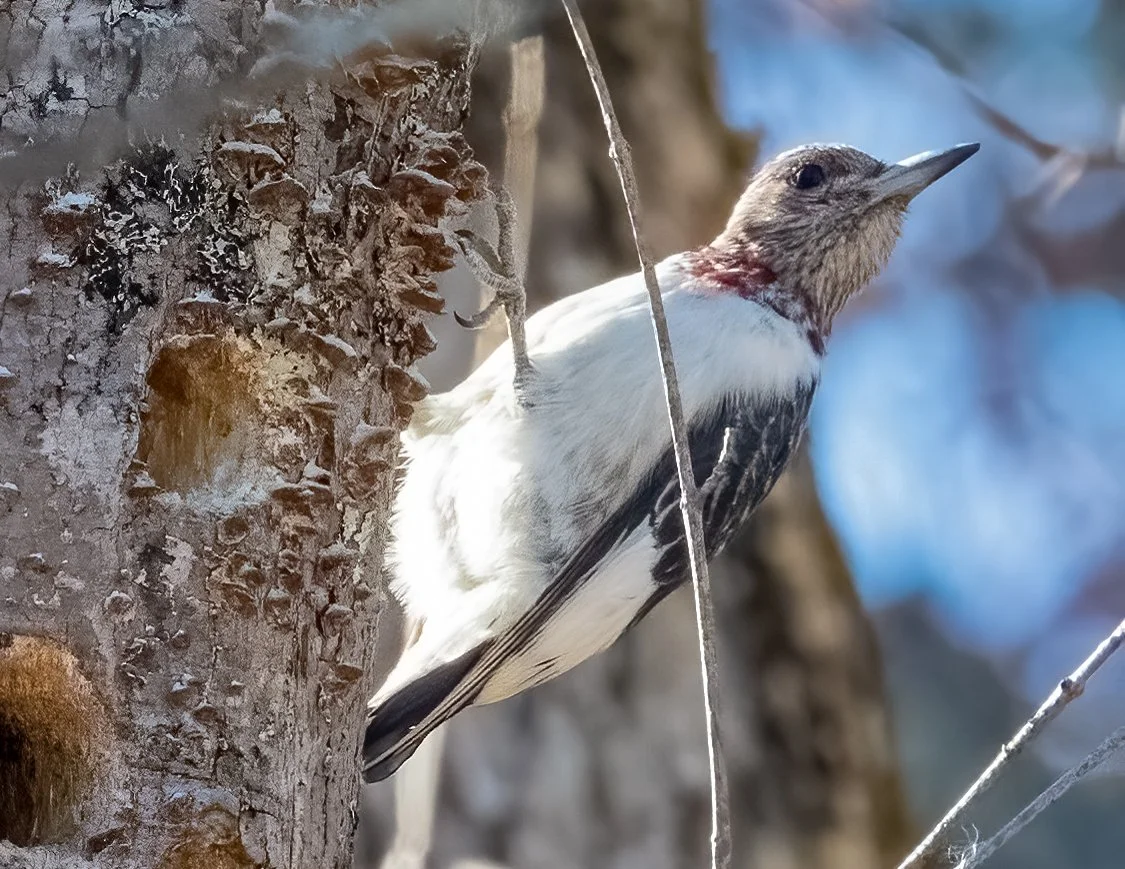Red-headed woodpeckers
Red-headed woodpecker Weston Road Swamp
Red-headed Woodpeckers are striking birds known for their vivid red heads, contrasting sharply with their white bodies and black wings. These medium-sized woodpeckers inhabit forests, woodlots, and open countryside with scattered trees, often favoring deciduous habitats. Another favorite habitat of these woodpeckers are swamplands with standing dead trees. They are notable for their versatile diet, consuming insects, fruits, seeds, and even small vertebrates, which they often store in tree crevices. Their distinctive drumming and sharp calls are common during the breeding season. Conservation concerns exist due to habitat loss and competition from invasive species, making monitoring and preservation efforts important to maintain their presence in New York and surrounding areas.
Swamp along Weston Road in New Paltz, NY
In the past, one of the most reliable sites for finding the Red-headed woodpecker as well as other more common species in our region of New York was the swamplands found along Weston Road in New Paltz, NY. The area had an abundance of standing deadwood making it extremely attractive for woodpeckers. Primarily due to storm activity, however, many the trees have fallen and as a result finding the woodpeckers at this site has become a bit more of a challenge. Note the amount of suitable habitat here as compared to the photo below of nearby swamplands along VanNorstrand Road in the photo seen below.
Swamplands along VanNorstrand Street, New Paltz, NY
When birders are having trouble finding target species at a known habitat, you will often hear a common refrain of , “Well, birds have wings and they can use them!” In this case, they did not have to go too far. The “new habitat” along VanNorstrand Street is only several miles from Weston and for whatever reason, the standing deadwood has withstood the storms and is still present. This is not to say that you cannot find the elusive Red-headed woodpecker in the Weston swamp, but for sure they are now far more plentiful and easier to locate at the VanNorstrand site. While many of this species are short-distance migrants, northern birds may travel to southeastern states for the winter. This population is here pretty much year-round, however, making this site all the more remarkable and attractive to birders and photographers.
This young Red-headed woodpecker is this year’s brood. Its brown head will be replaced with the striking red plumage for which it is named during the first winter. (See next image)
With the population of Red-headed woodpeckers on the decline, we can only hope that habitat like the swamp along VanNorstrand will withstand the pressure of developers.





